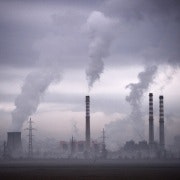Spinning while power prices surge
It's not hard to make a case that 2012 could be an important year in shaping Australia's energy future, but it's a bold soul who asserts that too many of us will be looking back in satisfaction 12 months from now.
The energy markers for the year ahead are already laid out.
The federal government is due to deliver the final version of its energy white paper, possibly by mid-year.
A review of the renewable energy target is due in July just as the federal carbon price regime starts operating next July.
The Gillard government aims to gets its controversial $10 billion Clean Energy Finance Corporation ready to start operating in 2013, and is also scheduled to announce which coal-fired power plants it will pay to start shutting down in the second half of the decade.
Meanwhile, the biggest state market, New South Wales, is supposed to see its remaining government-owned generation assets sold.
The Australian Energy Market Commission is due to make important decisions about the rules covering regulation of electricity and gas networks – and the Australian Energy Regulator will be working on determinations of what the networks can spend post-2014.
The AEMC is also supposed to bring down a decision on a new regime for power transmission investment.
High voltage transmission is central to the existence and efficiency of the east coast electricity market, but glaciers have been known to move faster than consideration of how to improve the investment rules.
And, of course, the UN climate policy circus will set up its tent in Qatar next December in an effort to either rescue something from the disaster in Durban or to build on the agreements reached there, depending on which of the widely-differing dissections of the recent meeting you buy.
Outside prospects for local 2012 action include a national feed-in tariff for rooftop solar power – which I give Buckley's, frankly – and a national energy efficiency target
Domestically, there are a few certainties.
One is that the proponents of a wholly renewable electricity supply for Australia and of a shift to nuclear power will not see out 2012 feeling any better than they do today.
Another is that, whatever happens, the Greens will still be telling us it is not nearly green enough.
A third is that wind power advocates and opponents will still be arguing this time next year about where turbines can be erected.
Apart from the initiation of the carbon price, which will occur amid promises from the Coalition that it will be ditched as soon as they win office, it is also certain that power prices will continue to rise, although the exact level of increase remains to be seen.
Given the supposedly "white hot” community views on electricity prices – which we were assured back in March was the voter mindset as NSW went to the polls and which we may see play a role in the upcoming Queensland election – there was surprisingly little mainstream media follow-through in December on an important report delivered to the Council of Australian Governments' energy ministers committee.
The critical point in the report prepared by the AEMC is that we can expect a rise of 37 per cent in power bills across the country between 2010-11 and 2013-14. In other words, a householder paying $1,500 a year for electricity today can expect to be forking out about $2,050 in 2013-14.
On the AEMC's estimates, the two states with the most consumers – NSW and Queensland, with 4.5 million residential account holders between them, half the national total – will be the ones to see the highest prices rises: 33 per cent south of the Tweed and 32.2 per cent north of the river.
The AEMC breakdown of costs sees networks (transmission and distribution) contributing half of the increases across the country with wholesale energy prices (including the impact of a carbon charge) adding 40 per cent.
Displaying political twitchiness about the impact of network capital outlays, the COAG energy ministers have reacted to the report by announcing Productivity Commission inquiries in to the productivity of distribution businesses (most of them government-owned) and the efficiency of transmission interconnection.
The solar industry hopped up and down when the projections came out, but got little media traction for the point it desperately wants to make: the rooftop schemes add under five per cent to costs.
"More than half a million Australian households are now reaping the benefits of generating their own electricity,” the solar spinners trumpet.
To which their critics retort that another 8.5 million householders are picking up the tab for the scheme.
In the same vein, the large-scale RET (essentially the wind farms) will contribute just 3.8 per cent of the higher costs, but this won't stop the energy-intensive lobby from demanding that it should be abandoned as the carbon price is introduced..
Add together the federal and state carbon abatement schemes (including the carbon tax) and the pursuit of a greener energy sector will contribute about 14 per cent of the power price rises between 2010-11 and 2013-14.
















